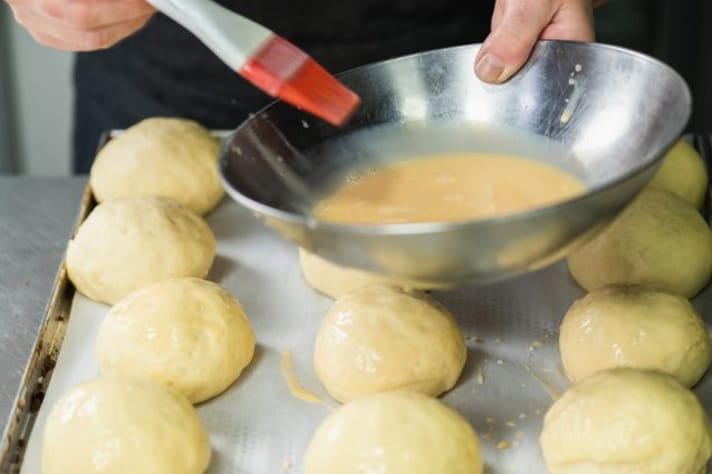Here’s Why You Should Never Give an Egg Wash to Your Already Baked Goods (In Case You Forgot Before Baking)
Forgetting to apply an egg wash before baking can be tempting to fix later, but doing so can ruin the texture, shine, and overall look of your baked goods. This mistake stems from the fact that egg wash needs heat and time to properly adhere and enhance the color and crispness. Applying it post-bake leads to a disappointing, greasy finish.

We’ve all been there—you're in the middle of baking a beautiful batch of pastries or a savory loaf, and suddenly it hits you: you forgot the egg wash! The thought crosses your mind: “Can I just slap some on now and call it a day?” The answer is a resounding no. Adding an egg wash after baking is a mistake you’ll want to avoid, and here’s why.
Egg Wash Works Best Before Baking
The main function of an egg wash is to give baked goods that perfect, golden-brown sheen. This glossy finish comes from the Maillard reaction, which occurs when the proteins in the egg interact with the heat during baking. By applying the egg wash before the item goes into the oven, you ensure that the egg has enough time to bond with the dough and develop that rich color. Once the item is baked, however, the Maillard reaction has already happened, and the egg wash won't have the same effect.
Lack of Adhesion: Why It Won’t Stick
Egg wash needs time and heat to properly adhere to your baked goods. If you apply it after baking, it won’t stick, and that shiny, professional finish you’re hoping for just won’t materialize. Instead, it’ll likely pool unevenly or create a streaky mess, which is far from the elegant gloss you were aiming for. The surface of your item has already set by the time it’s out of the oven, so it’s simply not going to hold onto the egg wash.

The Texture Disaster: It Won’t Be the Same
Egg wash doesn’t just give color; it also helps with texture. When applied before baking, it forms a delicate crust that enhances the crispness of the dough or pastry. Applying it after the fact means you’re essentially slapping a layer of egg on top of an already cooked surface. This won’t replicate the light, crispy texture achieved when the egg wash is baked in. Instead, you’re left with an overly greasy or soggy outer layer that can ruin the carefully balanced textures of your creation.
Overcooked or Burnt Egg Wash: A Real Risk
Adding an egg wash after baking can lead to overcooking or even burning the egg, especially if you try to reheat the item to set the wash. While a lightly baked egg wash adds a subtle color and sheen, an overcooked wash will create an unappealing, uneven, and sometimes burnt look. You’re essentially creating a second layer of cooking, which can leave your food with an odd texture and taste—definitely not the desired outcome.

The Lost Aesthetic Appeal
Baked goods have a way of looking absolutely irresistible when they emerge from the oven with that perfect glossy finish. If you miss your egg wash and apply it after baking, you’ll be left with a less-than-ideal result. While some bakers might argue that it’s about the taste, let’s be honest—the visual appeal is just as important, especially when you’ve spent time crafting the perfect pastry. A haphazardly applied egg wash post-baking can totally ruin that flawless, mouthwatering look.
The Right Time Is Always Before
In the end, the golden rule is this: apply the egg wash before your goods go into the oven. This is when the magic happens, and you’ll get the best results. If you forgot the egg wash, resist the urge to slap it on after the fact. Instead, consider ways to enhance the appearance post-bake, like a dusting of powdered sugar on pastries or a glaze to add sweetness. But when it comes to that shiny, professional look, it’s all about timing—and that timing is pre-bake.

;Resize,width=767;)


;Resize,width=712;)
